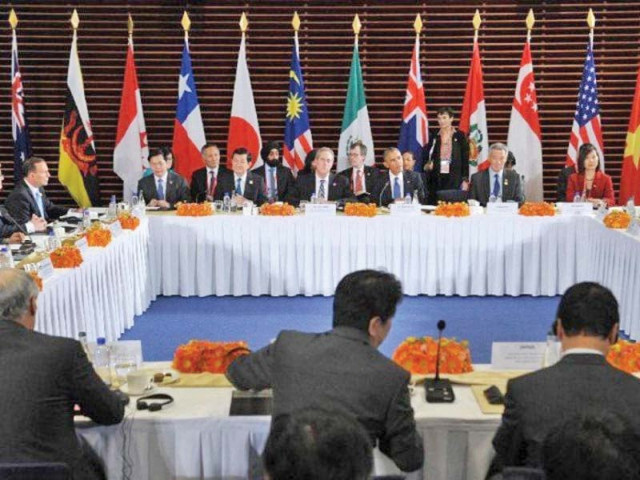Pakistan leveraging US and China’s interest in the region
Implementation will help country realise ‘trade and transit hub’ vision

Another important strategic objective was to support the landlocked Central-Asian republics and Afghanistan connect with the sea ports of South Asia. PHOTO: FILE
The China Pakistan Economic Corridor (CPEC) would bring much-needed investment and would connect mainland China with the Gwadar port via a 3,000-km road and railway link in Pakistan. China has two important strategic reasons to commit to this initiative.
China’s interest
China is looking to develop an alternative maritime link with Asia and Europe to reduce its reliance on its present maritime link through straits of Malacca in the South-China Sea.
‘Pak-China have survived the test of time’
This route would also considerably reduce time for goods to reach the European markets and the east coast of the US.
China is also looking to develop its western region which is economically less developed. The connectivity through Pakistan would make export-related manufacturing goods, which is the mainstay of the Chinese economy, financially viable for the Chinese industry.
US working on similar lines
The US is also embarking on an ambitious initiative through multilateral donor agencies for funding infrastructure projects and facilitating the creation of regional trade blocs with the policy objectives of creating economic opportunities to bring stability in the region.
An uncertain future
The US policy surfaced in 2011 through the policy vision called the ‘New Silk Road’ where US was envisaging political and economic stability in Afghanistan, after its troops withdraw from the region.
Another important strategic objective was to support the landlocked Central-Asian republics and Afghanistan connect with the sea ports of South Asia so as to provide them options other than relying on Russia for trade.
US companies show interest in Pakistan
The Chinese policy is advocated through the policy vision of ‘One Belt One Road’ where connectivity to Gwadar port is an important component. The vision envisages China’s road connectivity through Central Asia, West Asia, Middle East and Europe. China will also develop maritime linkages of Chinese sea ports with Africa through Suez Canal.
Competing for influence
The analysts believe that other than trade and energy security needs, an important motivating factor for China has been its exclusion from the Trans-Pacific Trade Agreement (TPP) which is seen as a US-led initiative to deepen its economic integration in the Asia Pacific region. According to recent media reports, the TPP negotiators have reached a consensus in implement the free trade agreement which would create one of the biggest free trade areas in the world and would constitute 40% of the world’s GDP and one third of global trade.
Progress: CPEC hailed as key to the future
Whether ‘One Belt One Road’ was in response to America’s push for TPP or vice versa, some experts see it as a new great game.
However, the recent public statement made by US policymakers saying that the New Silk Road should not be seen as a competition to China’s ‘One Belt One Road’, but rather as a partnership initiative, should comfort policymakers in Pakistan, since the country enjoys close relationships with US and China.
It is important for Pakistan to facilitate these upcoming initiatives and for which the most important factor is ensuring security.
US keen to invest in economic corridor projects
Pakistan government’s commitment to ensure security for the development of CPEC clearly reflects the clarity of vision to leverage these opportunities.
On the regulatory framework, it is important for Pakistan to improve its trade facilitation measures in order to compete with regional ports.
Recently, the transit business from Pakistan has shifted to the ports of Iran due to increase in transit costs for Afghan traders. The Chabahar port in Iran, located 70km north of Gwadar, is the main competitor.
CPEC- a window of opportunity for Pakistan
Iran and China have also contributed to the development of Chabahar port that now caters to substantial volumes of Afghan transit trade that were previously coming from Pakistan. A recent study by the Asian Development Bank on trade facilitation on Border Customs Posts (BCPs) at Chaman and Torkham which are included in the Central Asia Regional Economic Cooperation (CAREC) trade corridors does not portray an encouraging picture as Chaman and Torkham land border stations were below the regional border stations on goods clearance time. Pakistan has recently acceded to the WTO’s Trade Facilitation Agreement. Pakistan has also acceded to the United Nations transit convention (TIR convention). These two international instruments provide benchmarks for trade and transit facilitation.
The timely implementation of these conventions would improve Pakistan’s trade and transit facilitation and improve its competitiveness, which would help realise the policy vision of Pakistan as ‘hub for trade and transit in the region.’
The writer is a development professional with over 20 years of experience with public and development sector
Published in The Express Tribune, October 19th, 2015.
Like Business on Facebook, follow @TribuneBiz on Twitter to stay informed and join in the conversation.



















COMMENTS
Comments are moderated and generally will be posted if they are on-topic and not abusive.
For more information, please see our Comments FAQ